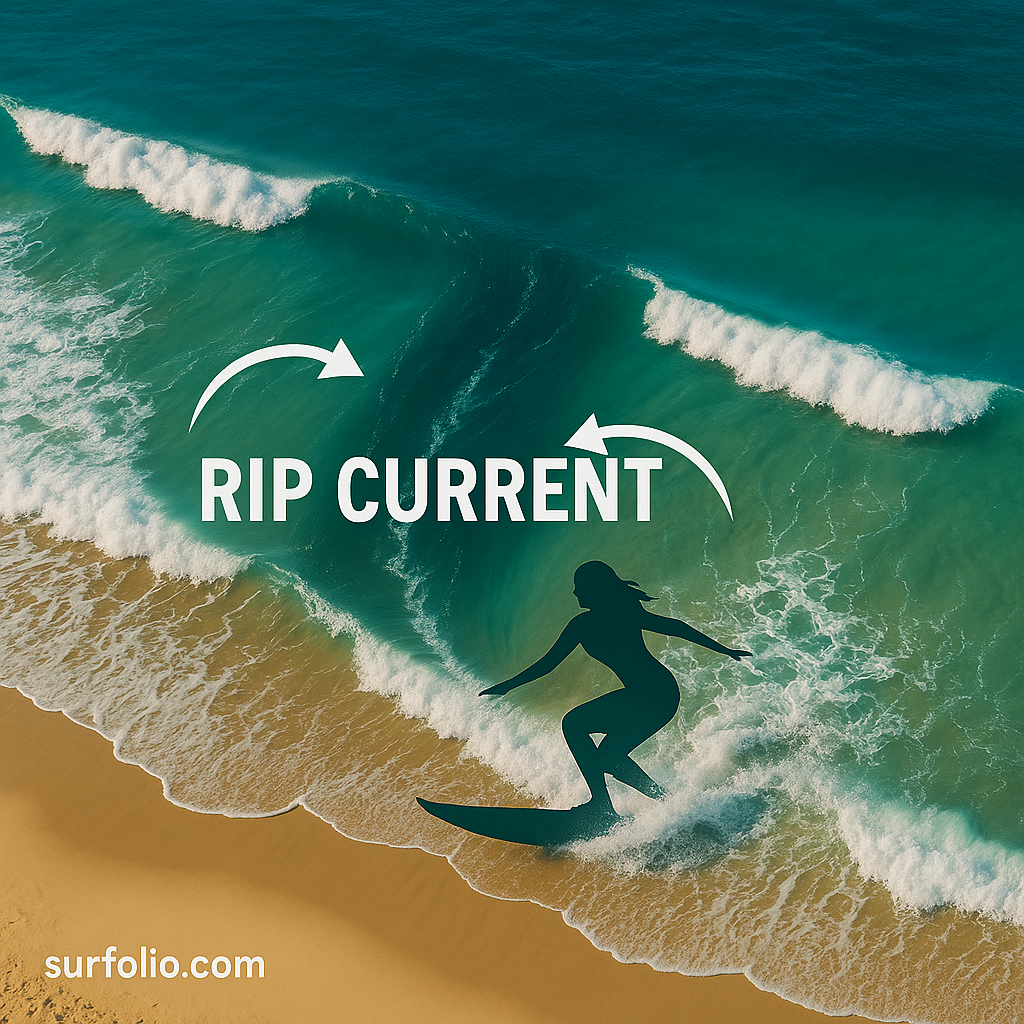
Understanding Rip Currents
Rip currents are one of the most misunderstood — and potentially dangerous — features of the surf zone. To surfers, they can be both a hazard and a helpful tool for getting out to the lineup quickly. Knowing how they form and move is essential for anyone who spends time in the ocean.
A rip current is a narrow, fast-moving channel of water that flows away from the shore. Instead of waves continuously piling up water toward the beach, rip currents act like natural drainage systems — carrying that excess water back out to sea.
How Rip Currents Form
Rip currents form when breaking waves push water toward the shore faster than it can spread evenly along the beach. This trapped water looks for an escape route, finding weak points between sandbars, jetties, or reefs where it can rush back out.
The Key Ingredients
- Incoming waves: Consistent wave action pushes water toward the beach.
- Uneven seafloor: Gaps in sandbars or channels along reefs create openings for water to flow seaward.
- Pressure imbalance: Water piles up near the shore and seeks the path of least resistance, forming a fast-moving current that moves outward.
This flow can reach speeds of 2 to 8 feet per second, faster than even an Olympic swimmer — which is why it’s so difficult to swim directly against one.
What Rip Currents Look Like
Spotting a rip current isn’t always easy, but surfers can learn to read the signs with practice.
Common Visual Clues
- Darker, deeper channels: Rips often appear as darker gaps between breaking waves.
- Foam or debris moving seaward: Look for lines of foam, sand, or seaweed flowing steadily offshore.
- Fewer breaking waves: Rip zones can look oddly calm because the water is deeper there.
From a higher vantage point (like dunes or cliffs), these patterns become much easier to see.
How Rip Currents Work
Think of a rip current as part of a circulation system. Here’s how it flows:
- Waves break and push water toward the beach (onshore flow).
- Water builds up near the shore and begins moving sideways along the beach (longshore current).
- When it finds a weak spot — such as a gap in a sandbar — it funnels rapidly back out to sea (the rip current).
- Once offshore, the current weakens and spreads out beyond the breaking waves.
This constant movement of water is part of how beaches naturally balance incoming and outgoing energy.
Why Rip Currents Matter for Surfers
While rip currents can be dangerous for swimmers, surfers often use them strategically. A rip can act like an express lane out to the lineup, helping you bypass breaking waves during a paddle-out. However, you must understand where the rip begins and ends — otherwise, it can pull you too far beyond the surf zone.
Surfer Safety Tips
- Always identify the rip’s direction and exit point before paddling out.
- Never rely on a rip if you’re unsure of the conditions.
- Once outside, paddle laterally (parallel to shore) to exit the current before paddling back in.
What to Do If You’re Caught in a Rip
If you find yourself pulled out by a rip current, the most important thing is don’t panic. Fighting directly against the current wastes energy.
Stay Calm and Follow These Steps:
- Float and conserve energy. The current won’t pull you under; it moves horizontally.
- Swim parallel to shore. Move sideways until you’re out of the narrow channel.
- Use waves to help you return. Once free of the rip, let incoming waves carry you back to the beach.
Surfers with boards have a major advantage — their buoyancy allows them to stay afloat easily while assessing the situation.
How Lifeguards Monitor Rips
At popular surf beaches, lifeguards are trained to spot rips and post flags or signs to warn swimmers. They often use drones or high vantage points to track shifting currents, especially during changing tides or strong swells.
Final Thoughts
Rip currents are a powerful part of the ocean’s rhythm — both a risk and a resource for surfers who understand them. By learning to recognize their signs and flow, surfers can stay safer and use these natural currents to their advantage.
